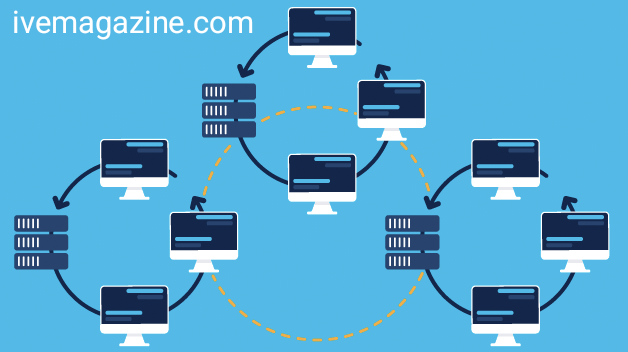Introduction to State Wide Area Network
A State Wide Area Network (SWAN) is a centralized communication infrastructure used by government and public institutions to interconnect various offices across a state. Acting as a backbone for digital governance, it streamlines communication, supports e-Governance services, and promotes transparency. Essentially, SWAN provides high-speed, secure, and reliable network access for public administrative functions.
How a State Wide Area Network Works
SWAN functions by connecting multiple district and sub-district level offices using a hierarchical model—usually in a three-tier architecture: State Headquarters (SHQ), District Headquarters (DHQ), and Block Headquarters (BHQ). Data flows through dedicated lines and virtual private networks, ensuring seamless connectivity across various administrative levels.
Components of a State Wide Area Network
A SWAN comprises multiple components such as routers, switches, firewalls, and modems. Additionally, core servers, management consoles, and backup solutions are installed for data storage and continuity. Software platforms ensure efficient data management and network monitoring.
Benefits of Implementing a State Wide Area Network
Organizations gain a multitude of benefits from implementing SWAN:
- Enhanced Connectivity: Swift data transfer between departments improves operational efficiency.
- Centralized Control: Reduces administrative delays and duplication of efforts.
- Cost-Effective: Once implemented, maintenance is cheaper than running isolated systems.
- Improved Service Delivery: Enables e-Governance applications and online public services.
Moreover, SWAN supports real-time decision-making, boosting overall productivity across governmental sectors.
Challenges in Managing a State Wide Area Network
Despite its benefits, SWAN isn’t without hurdles:
- Security Risks: The risk of cyberattacks or data breaches is significant.
- Maintenance Complexity: Constant monitoring and technical expertise are essential.
- Infrastructure Limitations: Remote regions may lack basic network infrastructure, delaying deployment.
Addressing these challenges requires strategic planning and consistent policy support.
Use Cases of State Wide Area Networks
Governments primarily use SWANs for integrating various public service departments. For example:
- Education: To connect schools and universities to the central education board.
- Healthcare: For maintaining digital patient records and coordinating services.
- Law Enforcement: Real-time data exchange among police stations enhances public safety.
These use cases demonstrate how critical SWAN is in today’s digital governance ecosystem.
Difference Between WAN and State Wide Area Network
While both WAN and SWAN connect distant locations, a SWAN is typically government-controlled and limited to a state’s boundaries. WANs, on the other hand, can be privately or publicly managed and span across multiple regions or countries.
Security Considerations in SWAN
Security forms the backbone of SWAN. Techniques like data encryption, firewalls, and secure tunneling (e.g., VPN) are applied rigorously. Access control systems and audit trails also prevent unauthorized data access.
Scalability and Flexibility of SWAN
One major advantage of SWAN is its scalability. As the state’s needs grow, SWAN’s architecture allows for seamless expansion without massive restructuring. Whether adding more offices or increasing bandwidth, the system is built to adapt.
Protocols and Technologies Used in SWAN
SWAN typically employs technologies such as:
- MPLS (Multiprotocol Label Switching)
- VPN (Virtual Private Network)
- IP Routing Protocols like BGP and OSPF
These tools help maintain secure and efficient communication.
Maintenance and Support in SWAN
SWAN is supported by a combination of automated tools and IT professionals. Remote network monitoring, performance analytics, and helpdesks ensure the network remains operational and efficient.
Cost Analysis and ROI of SWAN
Though the initial setup may seem costly, the return on investment becomes apparent over time. Lower operational costs, better coordination, and time savings offset the capital expense within a few years.
SWAN in Smart Cities Development
State Wide Area Networks play a foundational role in smart city initiatives. They enable real-time surveillance, waste management systems, intelligent traffic control, and IoT integration for improved urban living.
Case Studies of Successful SWAN Implementation
India’s NICNET and several state-level SWANs like Bihar SWAN and Gujarat SWAN have proven how impactful these networks can be. Services became more accessible, transparent, and responsive in these states due to robust digital backbones.
Future Trends in State Wide Area Network
The future of SWAN lies in cloud integration, 5G connectivity, and AI-driven automation. As digital governance expands, networks will evolve to become more intelligent, secure, and responsive.
Frequently Asked Questions (FAQs)
Q1: What is the purpose of a State Wide Area Network?
A: It connects various government offices within a state for efficient communication and data sharing.
Q2: Is SWAN different from the internet?
A: Yes, SWAN is a private, secured network designed for internal use, unlike the public internet.
Q3: How secure is a SWAN?
A: Very secure, thanks to encrypted data, firewalls, and access controls.
Q4: Can SWAN be used in rural areas?
A: Yes, but it may require additional infrastructure for connectivity.
Q5: Who manages SWAN operations?
A: State IT departments or contracted IT firms typically manage and maintain the network.
Q6: Is SWAN expensive to maintain?
A: After the initial investment, maintenance costs are relatively low and cost-effective long-term.
Conclusion and Key Takeaways
In conclusion, a State Wide Area Network forms the digital backbone of a modern, connected governance system. It fosters efficiency, transparency, and faster public service delivery. Despite facing challenges in deployment and security, its advantages far outweigh the drawbacks. With emerging technologies, SWAN is set to revolutionize how governments operate and interact with citizens.



